Heliocentricity and Theoretical Proofs (part two). Forces which Copernicanism cannot explain.
Neither can the Sun-worshippers explain why the Earth does not fall into the Sun.
(The gallant Copernicus leading mankind to insignificance and irrelevance)
“Most scientists refused to accept [Copernicus’s] theory for many decades — even after Galileo made his epochal observations with his telescope. Their objections were not only theological. Observational evidence supported a competing cosmology,the “geo-heliocentrism” of Tycho Brahe. The most devastating argument against the Copernican universe was the star size problem. Rather than give up their theory in the face of seemingly incontrovertible physical evidence, Copernicans were forced to appeal to divine omnipotence.”
(The Case Against Copernicus by Dennis Danielson and Christopher M. Graney)
The ‘star size problem’ was an early objection to Copernicanism, given that the stars must be far away, yet they are visible and defined. This implies a massive size, hundreds if not thousands of times bigger than our Sun for example. Yet their appearance in the sky is small and uniform. The only way to explain this is by invoking a divine presence, or appealing to the distortion of light and optical illusions.
Optical explanations were not forthcoming until the mid 18th century though even now there is dispute about the validity of these claims. Stars are still seen as ‘points of light’, and very few adequate explanations exist which satisfy the ‘star size’ issue, though it is generally ignored in modern science, which views the ‘optical illusion’ explanation as sufficient.
Putting this issue to the side, we can list the standard textbook ‘proofs’ for heliocentricity which will be discussed and analysed in sequence:
1. Newton’s theory of gravitational attraction (this is false, see the previous post and this post below)
2. The Stellar Parallax (#2-11 covered in future posts)
3. Stellar aberration of the Sun
4. The Foucault Pendulum
5. The bulge at the Equator
6. Geosynchronous satellites
7. Space probe measurements
8. Retrograde motion (this post)
9. Star-streaming
10. The Doppler effect
11. Geometric complexity of geocentrism
Prologue
Previous posts have looked at the paucity of real evidence for heliocentricity. Remarkably these failures in experimentation or evidence, are always turned into ‘proofs’ by ‘The Science’. Other models can explain the same phenomena but are dismissed out of hand due to the philosophical-world or universe-view that heliocentricity ‘must be right’. The reality is that there is not a single mechanical proof to support this theory (posts outlining this are shown at the end). This deposition follows from the problems with Newton’s law of gravitation which cannot explain how planets and constellations behave and why it does not support heliocentricity.
Models and problems
‘The Science’ and its heliocentric model explain that within our solar system the planets revolve around the Sun, and our milky way galaxy revolves around a center of the Universe whose location has never been identified. In this theory, which is a part of the discredited Big Bang dogma, gravitational attraction between smaller and larger bodies ‘holds’ the patterns of orbits and the relationships between planets. There are many issues with this theory. A simple one is the following question.
Problem Statement: Given that approximately 1 million Earths fit into the Sun, why doesn’t the Sun simply consume our Earth?
Related to this we can ask, why doesn’t the Earth consume the moon given that the Earth’s diameter is 4 times that of the moon? The answer is that there are issues with the ‘laws’ of gravity, given they don’t explain the observed phenomena nor answer the simple question above. Gravity is a weak force, so some other ‘forces’ must be at work.
A second model which offers an answer to the above question is the Tychonic-Ptolemaic concept, where the Earth is immobile at the center of the universe and the planets in our solar system either revolve around the Earth (Ptolemy), or the planets revolve around the Sun and this collection revolves around the Earth (Tychonic). Tycho Brahe’s model is thus a mixture of heliocentricity and geocentricity, based on thousands of observations and calculations. Mathematically, even using modern scientific standards and observations, both the Ptolemaic and Tychonic models are valid, though no one is told this.
Video, summary overview of the Heliocentric, Tychonic and Ptolemaic models
In the Tychonic model the entire universe revolves around the Earth. The Earth may still rotate (the neo Tychonic or semi-Tychonic model) or be immobile as Tycho Brahe believed. The massive force used to generate the phenomenal speeds to rotate the universe around the Earth is a logical objection to this model of planetary movement. These objections, as outlined below, can however be answered using the standards and principles of modern science (Assis, pp. 190-191).
I am not suggesting that the model is right or wrong, but as will be shown, mathematically using modern science’s own postulates there is no argument against this model. The model also explains phenomena that Newtonian and standard Copernicanism cannot. I am only looking at Socratic proofs to resolve the problem statement: ‘Why doesn’t the Sun consume the Earth?’
The point is that the observational evidence, the universal forces which are confirmed by modern science including the Coriolis force, the Euler force and centrifugal forces (which are discussed below), the existing mathematics and models, and the affirmed principles and ‘laws’ of modern science, do not disprove the Tychonic system, but actually confirm much of what it postulates. The Tychonic model addresses the problem statement posted above, whilst heliocentricity does not provide an answer, hence the use of Dark Matter (a made up never-found constant to balance equations akin to Einstein’s steady-state model constant) and extended maths to Newton’s and Einstein’s equations.
Mach-o, Mach-o man
In the neo-Tychonic model, the gravitational attraction of the Sun with the Earth is balanced by a real gravitational-centrifugal force generated by the annual rotation of distant masses around the Earth (with a component having a period of one year). In this model the Earth can remain at rest, a constant distance from the Sun. Modern science can have no objection to this idea of geo-helio-centrism due to the duality of its own force laws and the theory of Relativity.
Using Mach’s Principle and Einstein’s General Theory of Relativity which employs the same; we can see that the neo-Tychonic model where the Earth is at rest in the center of the universe and has the Sun revolving around it, is not madness. Universal distant matter (e.g., galaxies) which rotate around the Earth could create a centrifugal force, which is like gravity, but actually counteracts the force of gravity, keeping the Sun a certain distance from the motionless Earth, namely, 91-94 million miles. These forces would be the ‘Coriolis force’ (more below). This could help explain why the Earth does not fall into the Sun, or why our moon does not missile bomb the Earth (Popov, 383-391).
As Einstein admits:
“We need not necessarily trace the existence of these centrifugal forces back to an absolute movement of K' [Earth]; we can instead just as well trace them back to the rotational movement of the distant ponderable masses [stars] in relation to K' whereby we treat K' as ‘at rest.’…On the other hand, the following important argument speaks for the relativistic perspective. The centrifugal force that works on a body under given conditions is determined by precisely the same natural constants as the action of a gravitational field on the same body (i.e., its mass), in such a way that we have no means to differentiate a ‘centrifugal field’ from a gravitational field….
This quite substantiates the view that we may regard the rotating system K' as at rest and the centrifugal field as a gravitational field….The kinematic equivalence of two coordinate systems, namely, is not restricted to the case in which the two systems, K [the universe] and K' [the Earth] are in uniform relative translational motion.” (Einstein’s October 1914 pp. 69, 71).
Einstein has confirmed that a Tychonic or Ptolemaic universe is certainly feasible and possible. It is as least as credible as the Copernican faith which has the Earth moving through the ether (a medium largely denied by ‘The Science’) at 108.000 km per hour. Quite a clip. Many posts have discussed that no mechanical proofs for this have ever been presented (listed at the end). It is only 500 years since the days of Copernicus. Take your time.
Coriolis and universal power
The Coriolis force was first identified by Galileo’s contemporary the Jesuit Riccioli, in the mid 17th century, though credit for this ‘force’, has been given to the Frenchman Coriolis from the early 19th century. There are 2 interpretations of this ‘force’ with neither being mentioned by Newton or Copernican apologists in their maths or models, until the 20th century.
In the standard definition, a Coriolis force is generated as the Earth rotates, received by objects untethered to the ground such as air currents, as they travel long distances around Earth. In this model the rotating Earth spins faster at the equator than the poles, producing a force which is responsible for many large-scale weather patterns.
Copernicans do not elucidate what actually causes this force other than referencing a rotating Earth, which as many posts have already outlined, has never been proven. It is an assumption and tautological. Also, Copernicans and Relativists usually deny an ‘ether’ around the Earth, and leave unexplained how the Coriolis force is activated and how it interferes with our atmosphere.
Another explanation is that universal masses and forces are applied either to a spinning Earth, or an immobile Earth, resulting in weather patterns but also, keeping the Earth in its location. This universal force acts on every planetary object keeping them in their orbital patterns and relationships to other planets. Again this is not a part of Newtonian mechanics, though Newton outside of his official theories, does hypothesise that such a force or forces, might exist to explain planetary motion and static orbital patterns. In other words, observed phenomena, especially orbital stasis, are not fully explained by Newton’s ‘laws’ a fact which drove Einstein and others to find a remedy.
The Tychonic model is based on the 2nd option, and within this model, the Earth may be rotating (neo-Tychonic), or immobile (Brahe’s original model). The key point is that outside of Newton’s framework, the roughly five sextillion stars would exert mass and pressure throughout the universe, with the closest objects emitting the greatest force.
This Coriolis effect (universal) may also explain the Earth’s oblation at the poles and its bulge at the equator, without relying on the centrifugal effects of rotation which puportedly stretches the Earth at the equator flattening the poles. In the Tychonic model centrifugal and centripetal forces will oblate the Earth regardless of rotation. These forces will also generate the ‘global wind’ and other phenomena such as cyclones and weather patterns. Copernicans can’t object to this idea given that they invoke the same gravitational forces in the attraction between the moon and the Earth, and the planets and the Sun.
It should be noted that ‘The Science’ cannot explain why the Earth rotates, invoking swirling dust and gas in its supposed formation and the attraction of the Sun - all unproven: ‘but at a certain point, some gas and dust happened to shift a bit more in one particular direction, setting its spin in motion. When the gas cloud then collapsed, the cloud's rotation sped up’. What a load of rubbish. This can’t even be proven in a lab environment. And, supposedly in the ‘vacuum’ of space given there is no ‘friction’ the spinning top just keeps on spinning…at exactly the same pace and direction for 4 billion years….
Rotational forces
Let’s look a little more closely into the power of the Coriolis force as it is generated by a rotating universe within a Tychonic model. If we take the narrative at face value and use the Wikipedia entry specifically concerning the Coriolis force, the authors do show what it accomplishes. First, the contributors show us the following inertial force:
2Ω × vB is the Coriolis force
Ω × (Ω × rB) is the centrifugal force
dΩ/dt × rB is the Euler force.
Ω = the density parameter of the universe
v = velocity
r = radius
g = g force
dt = rate of changing time
There are 3 general forces, the Coriolis, the centrifugal and the Euler force. The Euler force in simple terms describes movement in a circle.
The main point here is to understand the power of these forces and how they could work to explain the phenomena we observe and answer our problem statement: ‘why doesn’t the Sun simply consume the Earth?’ given it is 1 million times the size of our planet.
To determine the components of acceleration, a general expression is built to describe the overall force [or, pseudo-force in modern science-speak], which includes the above 3 forces:
in which the term in Ω × vB is the Coriolis acceleration and the term in Ω × ( Ω × rB) is the centrifugal acceleration. The results are (let α = θ − ωt):
Producing a centrifugal acceleration:
Also:
Producing a Coriolis acceleration:
These are complicated equations (Weinberg, Barbour). In essence we are looking at a combination of forces which provide a net ‘centripetal’ force directed toward a center of rotation. In simple terms a powerful centripetal whirlpool effect (Mach, p. 279).
To be clear, a centrifugal force is an outward force, such as mud flying off your rotating bicycle wheel as you race along on the carbon frame, riding on top of this orb which is sprinting through the cosmos at 108.000 km per hour or so we are told. This centrifugal ‘force’ is more of an effect than a real force – it is generated by movement and other forces.
A centripetal force is a ‘real force’ acting inward. An example is the Earth’s gravitation pull on a satellite, or any object which is orbiting our planet with its supposed diurnal turn of 1000 miles per hour (Newton, Fc = mv2/r) (see centrifugal vs centripetal).
Muscular force
Based on the above, and dispensing with the narrative that the Coriolis is due only to the Earth’s rotation, we can see that the Coriolis force is so strong that it neutralizes the centrifugal force and creates a centripetal, inward force, on a target rotating object. The Coriolis force is twice as strong as the centrifugal effect. Anyone can now apply Newtonian vectors to get a sense of how powerful this is.
Given the above equations we can see that for every 1Ω (density parameter of the universe) force vector moving the Sun outward from the Earth, there is a 2Ω force vector at approximately right angles moving the Sun inward. This results in a curved path for the Sun’s movement:
We can present the above diagram in a three-dimensional view. In the image below, the green vector is the 1ω (with ω as the angular, speed, frequency or rate of the centrifugal force); the blue vector is the 2ω Coriolis force; the red vector is the net centripetal force; and the gray vector is the product of the centrifugal and Coriolis forces that gives the resulting curved direction of the Sun around the Earth.
(Sungenis, p. 126)
If the model is a Tychonic or geo-helio-centric view, the claim can be made that the Coriolis force which is generated by a rotating universe, will keep the Sun in rotation around the Earth even though the Sun is more massive than the Earth. Although the revolving Sun will have a centrifugal force that will seek to move it out in a radial direction (i.e. away from the Earth), the Coriolis force, along with a very slight pull from the Earth, will counteract the centrifugal force and the result is a net centripetal force on the Sun to keep it in orbit around the Earth (Weinberg, pp. 251-252).
This Tychonian explanation is not that different than what heliocentricity offers. In the Copernican view the Sun using its gravity, enacts a centripetal force on the revolving Earth. In the Tychonic model the geocentric inertial forces mimic or are akin to the heliocentric gravitational force. Using the same Newtonian terms and impulses for the heliocentric system, the various vectors would be represented by the following:
Or simply:
Stability
In the Tychonic model, the universal Coriolis force keeps the Earth stable and non-rotating, or in the neo-Tychonic, stable and rotating. If we assume the Tychonic system, it can be claimed that the Earth is the universe’s center of mass. This is supported by the fact that the Coriolis force is divided into two distinct directional forces on the Earth. In the Earth’s northern hemisphere (and, by extension, the northern hemisphere of the universe in the Tychonic model), the Coriolis force moves in a counter-clockwise direction (which is why hurricanes turn counter-clockwise in the north), but it moves clockwise in the southern hemisphere (and thus hurricanes turn clockwise in the south).
These two opposing directions may neutralise each other so that the torque on the Earth is again zero which could support an immobile or non-rotating Earth. If the torque is indeed zero that would lend support to the neo-Tychonic model (Barbour, Pfister). This hemispherical phenomenon cannot be explained by Copernicans or those who believe that the Coriolis simply due to the Earth’s rotation. Further, if the torque is zero, such a calibration can never be ‘a random chance event’. The mathematical probability of this occurring, against all the possible outcomes of such a force, is less than zero.
Assumptions
In any model of the universe, gross assumptions are made. For example, in the above neo-Tychonic model, some objections can be offered.
1. The stars are too far away to have any effect on our solar system;
2. It is likely that only stars within the Milky Way galaxy would impact the Earth’s orbit, location and movement or non-movement;
3. The Sun pace heliocentricity, seems to revolve around the Milky Way system;
4. In order for geocentricity to work, the Milky way must orbit the Earth at a faster rate than the Sun.
These are good and common-sense objections. In the neo-Tychonic model these objections can only be met, if we assume that the Milky Way is also revolving with the rest of the universe around the Earth. Mathematically this can be ‘proven’ and there would be no issue about the forces involved. It does however present challenges on the velocity and rate of revolution (daily) and the speeds involved (Popov, Eur. J. Phys., 34, 383).
In the neo-Tychonic view, the Milky Way is situated within the universe of galaxies so that the center of mass for the whole system is the Earth which sits on one of the arms of the Milky Way. In turn, since the Milky Way and the Sun are revolving around the Earth, the Milky Way will create a constant gravitational pull on the Sun and keep it at the appropriate distance away from the Earth. Mathematically this can be proven (just as heliocentricity can prove the opposite).
In this model the Milky Way, and the rest of the stars in the universe, must revolve more quickly around the Earth than the Sun does. The complication here would be that the gravitational force between the Milky Way and the Sun would change from day to day since different stars will be influencing the Sun. In a geocentric model this change this would mean that the distance between the Sun and the Earth must compensate for this change of distance between the Sun and various stars of the Milky Way.
Barycenter
(NASA simplification)
In the neo-Tychonic model the Sun oscillates at a distance of 91 million miles from the Earth at the perihelion (point where the Earth is closest to the Sun) and 94 million miles at the aphelion (point furthest away). Some might object that the center of mass for the Milky Way must be at or near the center of the Milky Way. This is fine within the geo-helio-centric model given that there is more than one center of mass, that is, there are local centers of mass and one universal center of mass or ‘barycenter’ to use the jargon. Again the principles of Mach, equivalency and even the General Theory of Relativity cannot object to this (Assis, 1999).
Another issue is that although theoretically the Earth can serve as a ‘barycenter’, there are no examples in the universe of a larger object revolving around a much smaller body. Tychonians would answer that this is expected within their model given that there is only one barycenter for the universe and a rather unlimited number of other local mass centers (Thompson,1023–9). The universal barycentre would be the total mass and attraction across all bodies both within and outside our solar system.
Galactic rotation
It is interesting to note that the Milky Way has a ‘co-rotation circle’ between the disc and the spiral pattern. A co-rotation circle is a circle around the galactic center of a spiral galaxy in which stars move at the same speed as the spiral arms. Inside the circle, the star moves faster, and outside the circle, it moves slower than the spiral arms.
The Earth is very near to the co-rotation centre. The means the Earth is nestled within a spiral arm and the spiral arm will not move against it. Without this phenomenon the conditions for life on this planet would not exist. Or, if the phenomenon is disturbed, we will have extinction events (or worse).
In the neo-Tychonic model, there is a daily Milky Way rotation involving the whole universe around the Earth on star-time (23 hours, 56 minutes and 4.1 seconds), with the pivot point for the Milky Way’s rotation being the place where the Earth is on the spiral arm (Mishurov, et al p. 85). The Earth’s co-rotation centrality supports the neo-Tychonic view that the Earth is at the universal barycentre. This concept shatters belief systems but there it is.
Probably the hardest thing to explain, is how can the universe at large, rotate around the Earth at such speeds? The answer from neo-Tychonians is the same as that used to explain how we on Earth don’t know we are supposedly moving at 30 km per second, namely the planet and its atmosphere are moving in unison and the gravitational effect prevents objects from leaving the surface of this fast-moving planet. This phenomena is effected at the milky way and the universe level.
Bottom Line
The point of this post was to use the existing ‘principles’ from ‘The Science’ and outline in brief some other models, particularly the neo-Tychonic, which can explain our universe and answer the problem statement at the beginning, ‘Why doesn’t the Sun consume the Earth?’ Many people have thought about this, but few within the Copernican church have bothered to try to explain it.
The fact that the Sun, 1 million times the size of our planet, does not simply ingest the Earth, is left unexplained by Copernicanism or Newton’s theories. In reality gravity is a weak force and cannot account for the orbital and planetary motions in our own solar system, let alone the universe. The same objections apply to the Earth’s relationship with our moon, an object which is ¼ the size of Earth and should, pace Copernicanism and gravitation, should simply fall into our planet.
Some conclusions:
One conclusion from the above is that ‘The Science’ of cosmological physics is not ‘settled’ nor can it explain the most basic of observations. This means that Copernicanism is just a theory, not a fact.
A second conclusion is that other forces, mentioned by Newton, but left outside of his formal theories, are at work. These included the Coriolis, the Euler and centrifugal forces. Without these ‘fictitious forces’ Copernicanism and Newtonian physics don’t work. Einstein’s work was an effort in part, to remedy such defects.
A third conclusion is that the Tychonic system, with its assumption of such forces, and with its predictive and accurate geometrical observations, is a viable model to explain universal phenomena. In fact, such a model better explains the phenomena in many ways than Copernicanism, including how the Coriolis forces act on the Earth.
Personally, I don’t know if the neo-Tychonic model is tenable given the velocities that must be involved if the stars rotate around the Earth. But we can say the same about heliocentricity. It is also self-evident that no mechanical proofs exist for heliocentricity or diurnal rotation, and that Copernicanism and its Big Bang theology cannot account for much of the observational evidence, hence the constant need to add fudge factors such as dark energy, or dark matter.
The real and measurable forces within the universe at large, namely the Coriolis, the Euler, the centrifugal, do offer observational and theoretical proof to support a neo-Tychonic view or at least some of the neo-Tychonic observations. Big Bangers have long complained that given their observations, the Earth seems to be in the center of the universe or its ‘barycenter’. The neo-Tychonians are providing an answer.
What next? Future posts will go through the usual theoretical support for Copernicanism and Sun-worship, but from a point of view that heliocentricity is just a theory and there are other models, particularly the neo-Tychonic, which can explain the observational phenomena just as well, if not better. Critical thinking applied to dogmatic ‘science’ or Scientism. Such an attitude is of course anathema to ‘The Science’.
===Related Posts
Heliocentricity and Theoretical proofs (part one). Newtonian gravitation
Heliocentricty and Scientism (part 3). Georges Sagnac and the ‘Sagnac effect’
Heliocentricity and Scientism (part 2). Experiments which found no movement of the Earth or its rotation.
Is Heliocentricity a proven fact?
An overview of Special Theory of Relativity (STR)
An introduction to the underlying maths of STR
Key scientists and actors within the STR domain
James Webb Telescope observations which refute parts of STR and the Big Bang
Herbert Dingle’s unanswered clock paradox and the inherent contradiction within STR
Scientism and Special Relativity, the Paradigm is ending
From Aristotle to the Big Bang
(quite a few posts about the scientism of the Big Bang, just use the search icon)
===
Sources
Assis, André Koch Torres, Relational Mechanics, 1999
Popov, L, “Newtonian–Machian analysis of the neo-Tychonian model of planetary motions,” European Journal of Physics, 34, 383-391 (2013)
Einstein’s October 1914 paper titled: “Die formale Grundlage der allgemeinen Relativitätstheorie,” trans. by Carl Hoefer, in Mach’s Principle: From Newton’s Bucket to Quantum Gravity, eds. Julian Barbour and Herbert Pfister, pp. 69, 71
Mach, E. 1960, The Science of Mechanics, 6th ed., LaSalle IL: Open Court
Weinberg, Steven, To Explain the World: The Discovery of Modern Science, HarperCollins, 2015
Popov, L., 2013, “Newtonian-Machian analysis of Neo-tychonian model of planetary motions,” Eur. J. Phys., 34, 383
Sungenis, R., Galileo was wrong, 2017
Thompson, B. G. 2005, “Using retrograde motion to understand and determine orbital parameters,” Am. J. Phys., 73
Mishurov, Yu. N., I. A. Zenina, “Yes, the Sun is Located Near the Corotation Circle,” Astronomy and Astrophysics, 341:81, 1999, p. 85




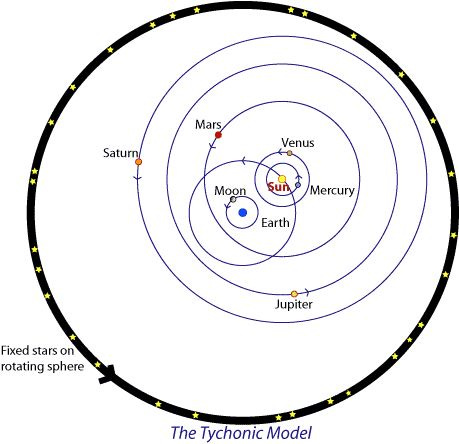






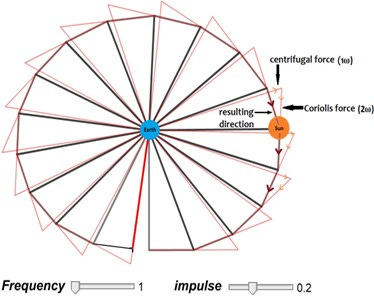
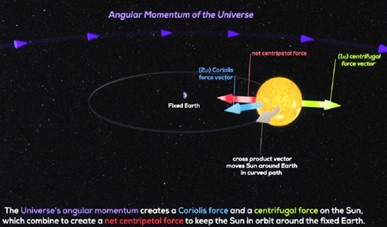
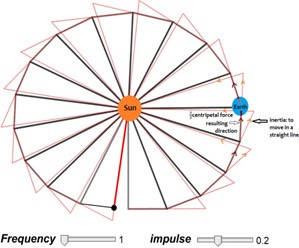

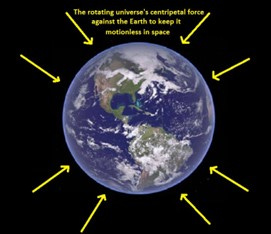


Terrific stuff, as usual. Where next? How about a general overview of the whole field, so far, with key points and so on? Science would have been fine if it could only have restricted itself to the realm of the speculative and left ultimate truth well alone. But no such luck. Now we have to be preached to by equation spouting acolytes in lab coats, with no appeal of any kind. At least in the old days of established time honored and widely accepted religions there was a degree of cooperation and dialogue - a discussion. Not any more. Now it is the way of science or no way. For me, science has done immeasurably more harm in the world than good and we would have been far better off without it. I fear things can only get worse.